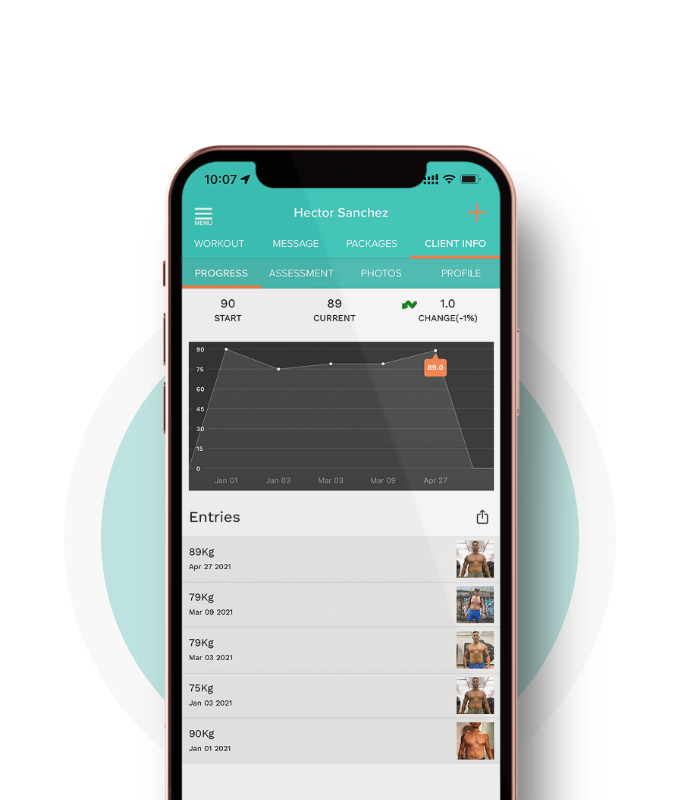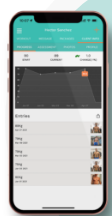The Future of Personal Training: How Technology is Changing the Game
As a personal trainer, it is important to stay up-to-date with the latest technologies and techniques in the fitness industry. Technology has the power to enhance and improve the way we train and develop our clients, leading to better results and a more efficient training process. In this article, we will explore the various ways in which technology is being utilized in the field of personal training and how it can benefit both trainers and clients.
One of the main ways that technology is being utilized in the fitness industry is through the use of wearable fitness devices. Companies such as Fitbit and Garmin offer a range of smartwatches and fitness trackers that allow trainers to monitor their clients' progress and activity levels in real-time. This allows trainers to adjust workouts and training plans on the fly, ensuring that clients are meeting their goals and getting the most out of their workouts.
In addition to tracking progress, these wearable devices also provide trainers with valuable insights into their clients' habits and behaviors. For example, a fitness tracker from Jawbone can show a trainer how much sleep a client is getting each night, or how many steps they are taking throughout the day. This information can be used to identify patterns and areas for improvement in a client's lifestyle, leading to more targeted and effective training plans.
Another way that technology is being utilized in the fitness industry is through the use of virtual training platforms. Companies such as Peloton and Mirror offer platforms that allow trainers to work with clients remotely, using video conferencing and other digital tools to provide personalized training and support. This can be especially useful for clients who may not have access to a local gym or who prefer the convenience of working out at home.
Virtual training platforms also provide trainers with a variety of resources and tools to help them deliver high-quality training sessions. For example, trainers can use virtual whiteboards from MyFitnessPal to demonstrate exercises and provide visual aids, or use virtual workout plans from Fitbit to guide clients through their workouts. This helps trainers to effectively communicate and demonstrate exercises, even when working with clients remotely.
Technology is also being used to improve the accuracy and effectiveness of fitness assessments. Traditionally, trainers have relied on manual measurements and subjective assessments to assess their clients' fitness levels. However, with the advent of new technologies, trainers can now use tools such as body composition scanners from InBody and VO2 max testing from Polar to get a more accurate picture of their clients' fitness levels.
These technologies can provide trainers with a wealth of data, including body fat percentage, muscle mass, and aerobic capacity. This information can be used to create more personalized and effective training plans, ensuring that clients are working towards their specific goals and needs.
In addition to the ways in which technology is being used to enhance training and development, it is also being utilized to improve the overall client experience. For example, many trainers are now using technology to create personalized workout and nutrition plans that are tailored to the specific needs and goals of their clients. Companies such as MyFitnessPal and LoseIt offer apps and software programs that allow clients to track their workouts and progress, as well as provide them with access to educational resources and support. By using these tools, trainers can create a more engaging and interactive training experience for their clients, helping to keep them motivated and on track towards their goals.
One such tool that is specifically designed for personal trainers is The Training Notebook app. This app allows trainers to create customized training programs for their clients, track their progress, and communicate with them directly through the app. It also includes features such as exercise demonstration videos, progress tracking, and the ability to schedule sessions and appointments. By using tools like The Training Notebook, trainers can streamline their work and provide a more comprehensive and convenient service for their clients.
Another way that technology is being utilized in the fitness industry is through the use of online fitness communities and social media platforms. These platforms allow trainers to connect with their clients and other industry professionals, share workout plans and tips, and provide support and motivation to their clients.
For example, trainers can create their own fitness-focused social media accounts, where they can share workout routines, nutrition tips, and other useful information. This can be an effective way to engage with clients and build a following, as well as provide additional value and support to clients outside of traditional training sessions.
In addition to social media, online fitness communities such as Fitbit's online support group or Beachbody's online support group provide a place for trainers and clients to connect and share their experiences and progress. These communities can be a great source of motivation and support for both trainers and clients, helping to keep them on track and motivated towards their goals.
Overall, it is clear that technology is playing a significant role in the modern world of personal training and development. From wearable fitness devices to virtual training platforms and online fitness communities, technology is providing trainers with new and innovative ways to monitor, support, and engage with their clients. By embracing these technologies, trainers can improve the efficiency and effectiveness of their work, ultimately leading to better results for their clients.
The Training Notebook Founder
Hector Sanchez




